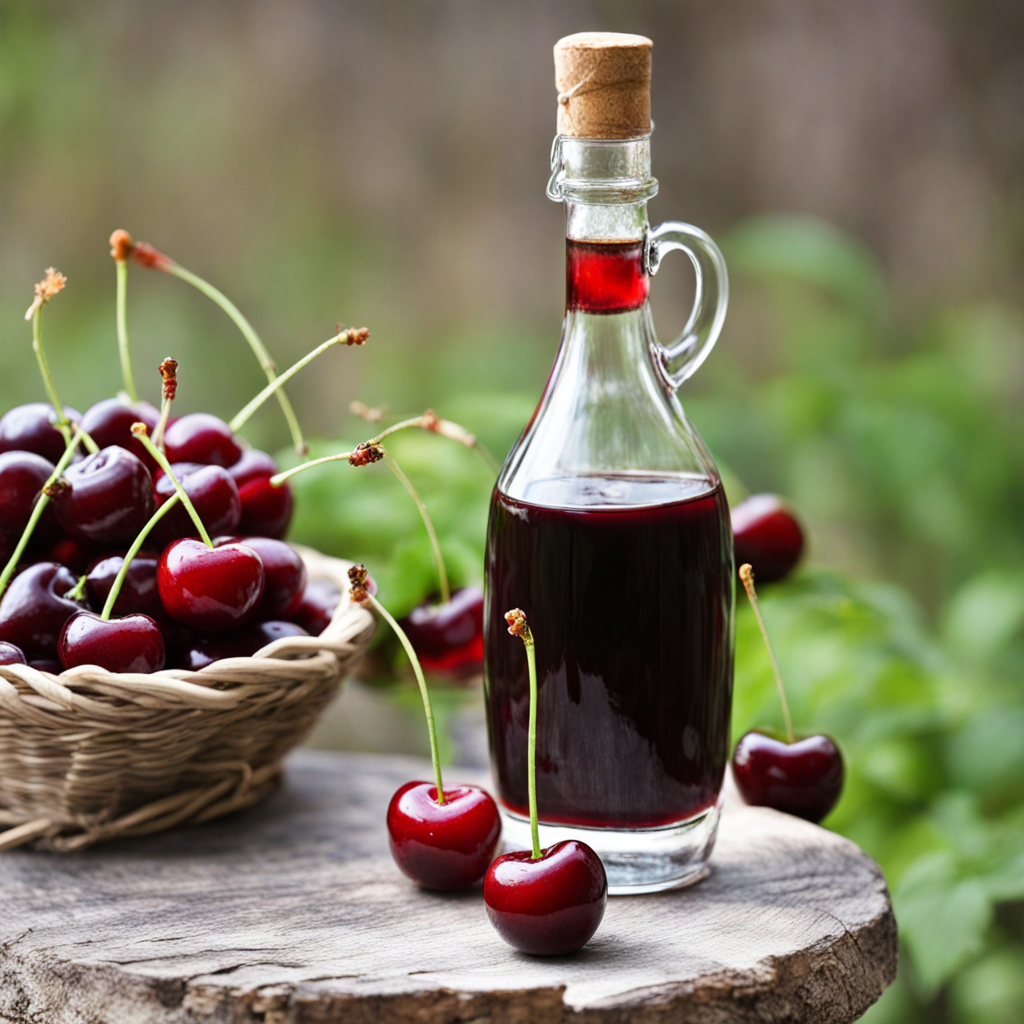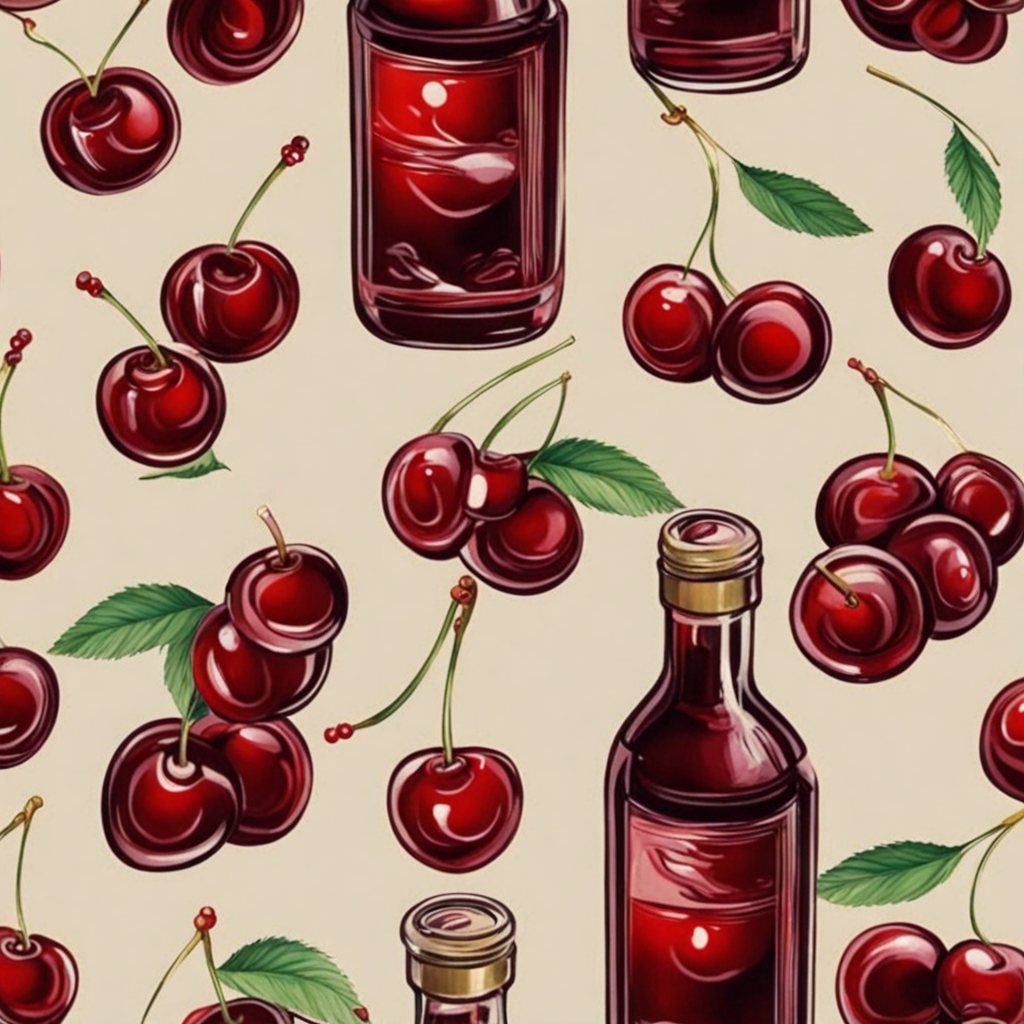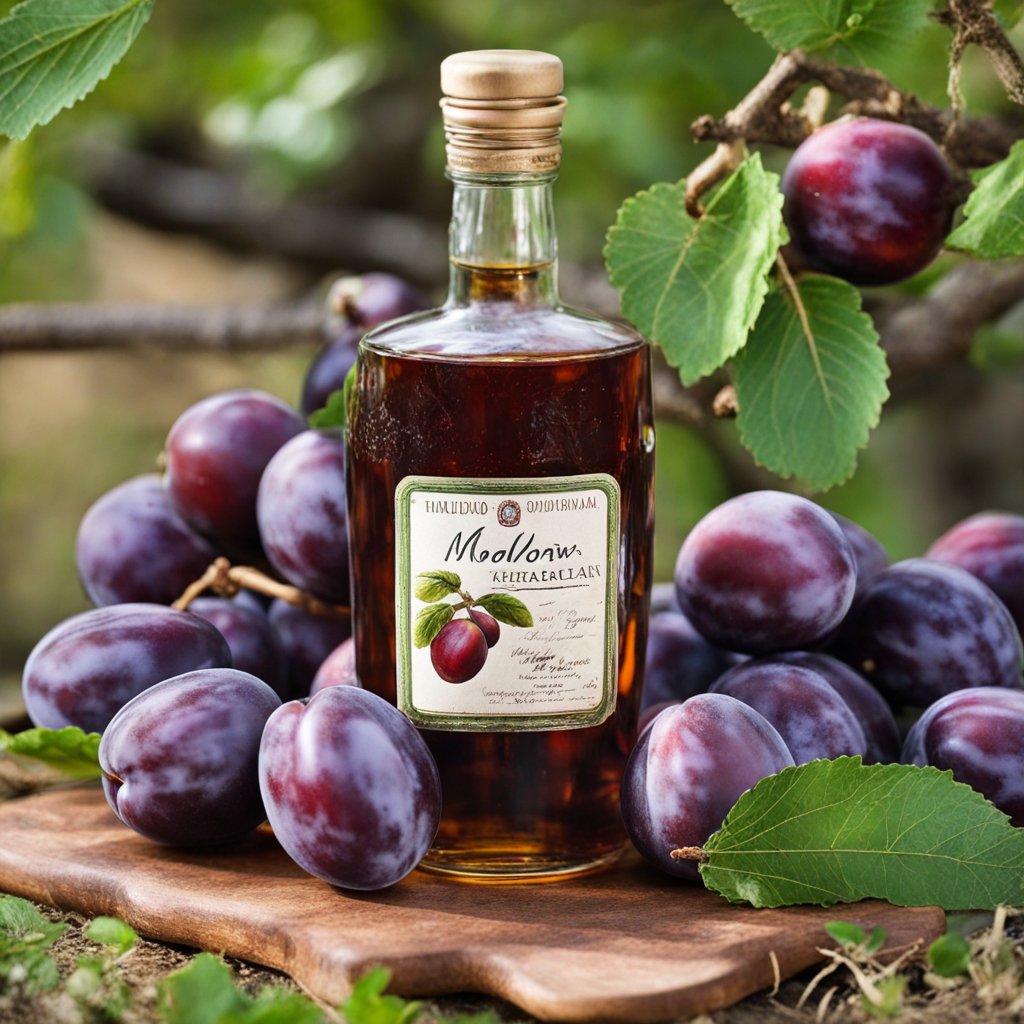Visinata
Visinata is a traditional Moldovan cherry liqueur that embodies the rich flavors and cultural heritage of the region. Made from ripe sour cherries, this delightful beverage captures the essence of summer with its deep ruby-red hue and aromatic bouquet. The cherries are carefully selected and macerated in high-quality vodka or homemade spirit, allowing their natural sweetness and tartness to infuse into the liquid. This process not only preserves the fruit's flavor but also creates a harmonious balance between the bright, zesty notes of the cherries and the smoothness of the alcohol, making each sip a refreshing experience. As you indulge in Visinata, you will notice its complex flavor profile—initially sweet with a hint of tartness, followed by a warm, lingering finish. The liqueur is often enjoyed chilled or used as a flavorful addition to cocktails, desserts, and even savory dishes. Whether sipped straight from a glass or drizzled over ice cream, Visinata brings a burst of cherry goodness that is both nostalgic and invigorating. It is also a popular choice during festive occasions, embodying the spirit of Moldovan hospitality and celebration. Visinata is more than just a drink; it represents a connection to the land and the people of Moldova. The process of making this liqueur is often a communal activity, where families come together to harvest cherries and prepare the liqueur, passing down recipes through generations. This cultural significance enhances the tasting experience, as each sip of Visinata tells a story of tradition, craftsmanship, and love for the land. Discovering Visinata means embracing a unique Moldovan delight that not only tantalizes the palate but also invites you to explore the rich tapestry of the country's culinary landscape.
How It Became This Dish
The History of Вишината: A Delicious Moldovan Tradition #### Origins Вишината, known as "vishinata" in English, is a cherished cherry liqueur from Moldova that embodies the essence of the region's rich agricultural heritage and cultural traditions. The name "vishinata" derives from the Romanian word for cherry, "vișină," which highlights the primary ingredient that defines this beloved drink. The origins of vishinata can be traced back to the fertile soil of Moldova, a land that has cultivated cherries for centuries. The region's climate, with its warm summers and mild winters, fosters the growth of various cherry varieties, particularly the sour cherries that are ideal for liqueur production. Historically, cherries were not only a staple in the Moldovan diet but also a symbol of abundance and prosperity. The cultivation of cherry orchards became an integral part of rural life, with families tending to their trees and passing down the knowledge of preservation and fermentation through generations. The practice of making fruit liqueurs, including vishinata, likely developed as a method of utilizing the bountiful harvest, ensuring that the flavors of summer could be enjoyed throughout the year. #### Cultural Significance Vishinata occupies a special place in Moldovan culture, serving both as a traditional beverage and as a symbol of hospitality and community. In Moldova, sharing a drink is a ritual that fosters connection and camaraderie, and vishinata plays a key role in these gatherings. It is often served during festive occasions, including weddings, holidays, and family reunions. The drink's vibrant flavor and deep red hue evoke feelings of warmth and joy, making it a preferred choice for celebrations. Furthermore, vishinata is not merely a drink but a representation of Moldovan identity. The preparation of the liqueur is often a communal activity, involving family members and friends who gather to harvest cherries, prepare the fruit, and partake in the fermentation process. This shared experience reinforces social bonds and cultural heritage, passing down recipes and traditions from one generation to the next. In folklore, cherries and vishinata are often associated with themes of love and romance. It is not uncommon for young couples to toast with a glass of vishinata during courtship rituals, where the drink symbolizes sweetness and the blossoming of new relationships. In this way, vishinata becomes intertwined with the personal narratives of those who enjoy it, serving as a liquid emblem of cherished memories and familial love. #### Development Over Time The evolution of vishinata reflects broader changes in agricultural practices, technology, and cultural exchanges within Moldova. In the early days, the production of vishinata was a simple process involving the fermentation of fresh cherries with sugar and water. Villagers would utilize traditional methods passed down through generations, often using homemade clay vessels to store the liqueur and allowing it to mature over time. This craft was rooted in a deep understanding of nature and the cycles of the seasons, as well as a commitment to preserving the fruits of the harvest. As Moldova began to engage more with the outside world, particularly during the late 19th and early 20th centuries, the production of vishinata evolved. The introduction of modern distillation techniques and glass bottles allowed for greater efficiency and improved storage, making it easier to share this beloved liqueur beyond local communities. During this time, vishinata gained popularity not only within Moldova but also among neighboring countries, as it became a sought-after delicacy in regional markets. The political landscape of Moldova, especially during the Soviet era, also had a significant impact on vishinata's production and consumption. Under Soviet influence, there was an emphasis on mass production and standardization, which affected artisanal practices. While some traditional methods persisted, many small producers found it challenging to compete with state-run factories that churned out cheaper alternatives. However, the resilience of Moldovan culture ensured that vishinata retained its status as a symbol of national pride and identity. In recent decades, there has been a resurgence of interest in traditional foods and beverages, including vishinata. As the global culinary scene embraces authenticity and artisanal production, many Moldovan producers have returned to time-honored methods of crafting vishinata, focusing on quality ingredients and sustainable practices. This revival is supported by a growing movement to promote local agriculture and protect indigenous varieties of cherries, which are crucial for maintaining the unique flavor profiles of the liqueur. Modern vishinata is often crafted with a blend of traditional and innovative techniques. Some producers experiment with different cherry varieties, infusing their liqueurs with spices or herbs to create unique flavor combinations. Additionally, the rise of the craft beverage movement has encouraged Moldovan distillers to showcase their products at international events, drawing attention to the rich tapestry of Moldovan culinary heritage. #### Conclusion Вишината is more than just a cherry liqueur; it is a symbol of Moldovan culture, history, and the deep connections that bind communities together. From its humble origins in the cherry orchards of Moldova to its role in modern celebrations and cultural preservation, vishinata encapsulates the spirit of the land and its people. As it continues to evolve and adapt to contemporary tastes, vishinata remains an enduring testament to the richness of Moldova's culinary traditions and the importance of honoring the past while embracing the future. Whether enjoyed in a festive toast or savored during intimate gatherings, vishinata is a reminder of the sweetness of life and the joy of shared moments.
You may like
Discover local flavors from Moldova







